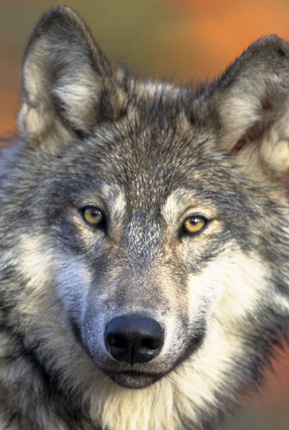
All Animals

The Wolf: Apex Predator and Social Mastermind of the Wilderness
The wolf, an emblem of wilderness and survival, is renowned for its role as a top predator, its complex social structures, and its profound influence on ecosystems. As a highly adaptable and intelligent species, wolves have captivated human imagination and played a crucial role in their natural habitats across North America, Europe, and Asia.
Wolves belong to the Canidae family, and their physical appearance reflects their role as formidable predators. Adult wolves typically weigh between 50 to 110 pounds (23 to 50 kilograms) and measure about 4.5 to 6.5 feet (1.4 to 2 meters) in length, including their tails. Their fur, which can vary in color from white and gray to brown and black, provides them with camouflage in a range of environments, from snowy tundras to dense forests. Wolves possess strong, muscular bodies, large paws, and a powerful bite, essential for hunting and scavenging.
Wolves are highly social animals, living in structured packs that typically consist of an alpha pair and their offspring. The pack’s hierarchy is maintained through a combination of vocalizations, body language, and scent marking. Pack sizes can range from a few individuals to over a dozen, depending on prey availability and environmental conditions. The alpha pair, usually consisting of the dominant male and female, lead the pack in hunting, territory defense, and caring for the young.
The pack’s social structure is integral to its survival. Wolves cooperate in hunting large prey such as deer, elk, and moose, using teamwork and strategy to bring down animals much larger than themselves. Their hunting tactics include tracking, surrounding, and tiring out their prey. In addition to hunting, wolves also engage in scavenging, feeding on carrion when necessary. Their role as apex predators helps regulate prey populations and maintain ecological balance within their habitats.
Wolves are found in a variety of ecosystems, including forests, grasslands, tundras, and mountains. Their adaptability allows them to thrive in diverse environments, from the frozen landscapes of the Arctic to the temperate forests of North America and Eurasia. However, their presence in an area often reflects a healthy and balanced ecosystem, as they are sensitive to habitat changes and human activities.
Breeding occurs once a year, typically in the winter, with females giving birth to a litter of 4 to 7 pups after a gestation period of about 63 days. The pups are born blind and helpless, relying on their parents for warmth, protection, and nourishment. As they grow, they learn essential skills from their pack, including hunting techniques, social behaviors, and survival strategies. The entire pack participates in rearing the young, ensuring their successful development.
Wolves face several challenges that impact their populations. Habitat loss due to deforestation, urban expansion, and agricultural development reduces their available living space and prey resources. Human-wildlife conflict, particularly with livestock predation, can lead to retaliatory killings and legal persecution. Additionally, wolves are sometimes targeted by poachers for their pelts and body parts.
Conservation efforts for wolves focus on habitat protection, legal safeguards, and promoting coexistence between wolves and human communities. Establishing protected areas, implementing effective management practices, and fostering public education about wolves are crucial for their conservation. Efforts to mitigate human-wildlife conflict, such as using livestock guardian animals and non-lethal deterrents, contribute to reducing negative interactions.
Wolves hold a significant place in cultural and symbolic contexts, often representing traits such as loyalty, courage, and cunning. Their portrayal in mythology, folklore, and modern media highlights their importance and the deep connection they have with human societies.
In summary, the wolf, with its complex social structure, adaptability, and role as an apex predator, is a remarkable and vital component of the natural world. Protecting wolves and their habitats is essential for maintaining ecological balance and preserving the integrity of the ecosystems they inhabit. By supporting conservation efforts and fostering a greater appreciation for wolves, we contribute to the well-being of these majestic creatures and the health of our planet’s natural environments.
